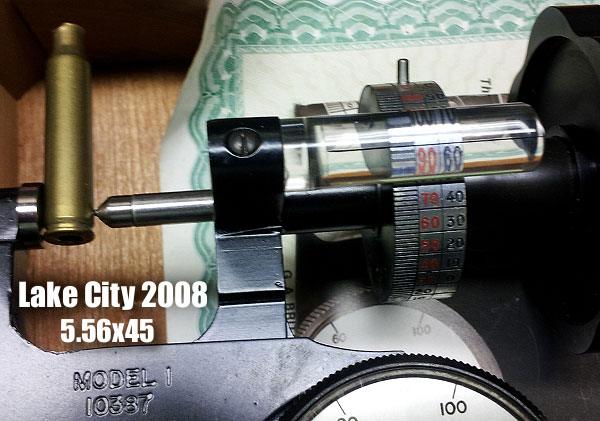as other posters have said, the salt bath must be allowing the hottest temps at the top surface of the bath. Simple solution would be to only submerge the neck and maybe the first .1" of the shoulder.
The other question I had is how did they hold the case in the salt bath? Anything on the case mouth, may act as a heat sink and pull the heat out of that area.
Either way I do think the amp gives the best most repeatable results, but I wouldn't say that salt bath doesn't acheive results either.
Let me begin by stating that I have no dog in this fight (yet) but, as
Barrelnut alluded to and
tailbon3 suggested a fix for, as did
LongBomber...
I don't doubt AMP's data per-say, I take exception to their test methodology and the conclusions they draw. AMP's own data shows their testing issue AND the solution to it! Notice chart 2, test positions 4, 5, 7 and 8 of the 550 °C for 8 seconds. The hardness is at or near the ideal (90 to 100) hardness
for the case neck! At the beginning of the "testing" they set a submersion depth of 5mm beyond the case shoulder/body junction. Why? Especially when considering the test data and results that they had already collected! There seems to be a lot wrong...
Nowhere in their "well documented" testing do we see any calibrated instrument testing of the salt bath temperature during the testing. Calibrated temperature recording should have been documented throughout the testing and at several depths of the salt bath. AMP's test results strongly suggest that all the salt bath was not up to proper temperature.
AMP's testing also revealed that, not only did annealing take place but, they submerged the cases too deep! Just looking at their test data, it appears to me that (kind of what
LongBomber suggested) a single dip for 8 seconds at 550 °C
0.1" above the case neck/shoulder junction would anneal the case nearly perfectly!
How could they possibly miss these issues or not see that their own test data provided all the necessary corrections for near perfect annealing, unless they were intentionally slanting the results to favor their interests.
Who was it that said; "there are lies, d*mn lies, and then there are statistics!"?
JMHO.
Kevin



